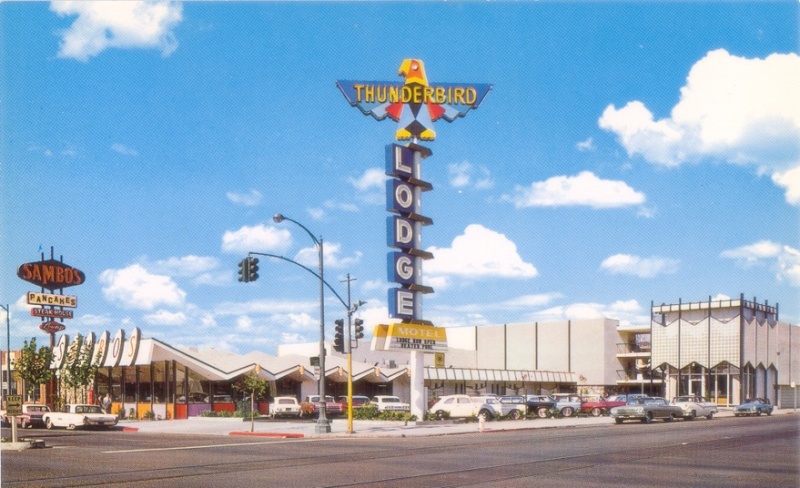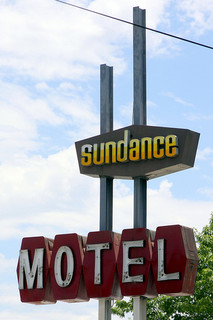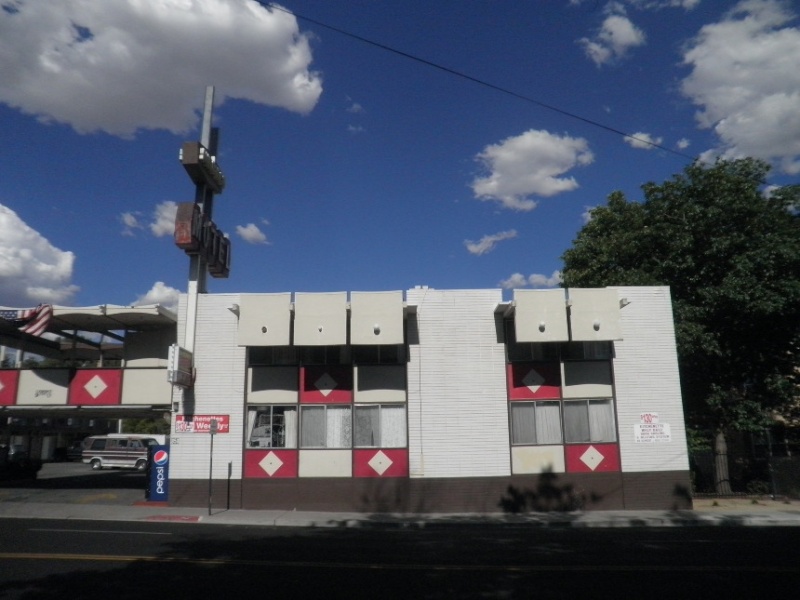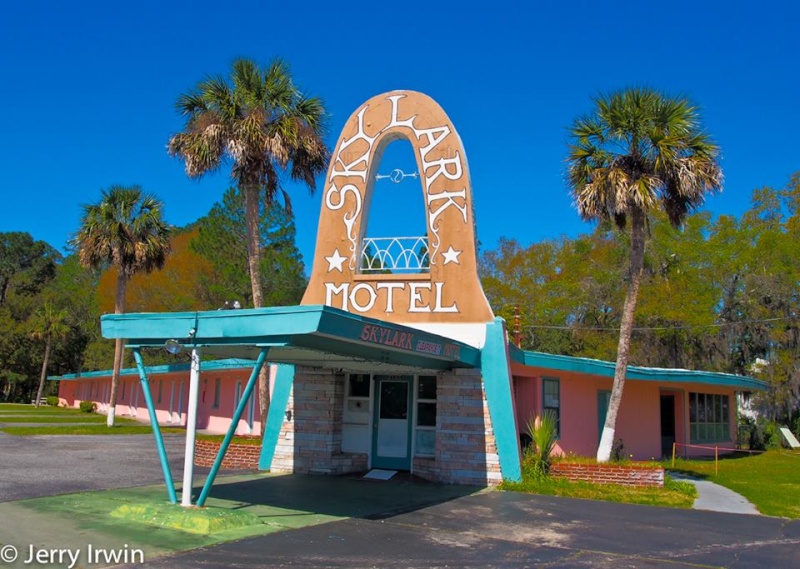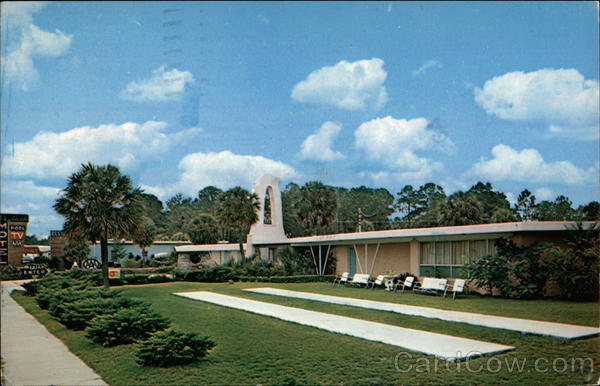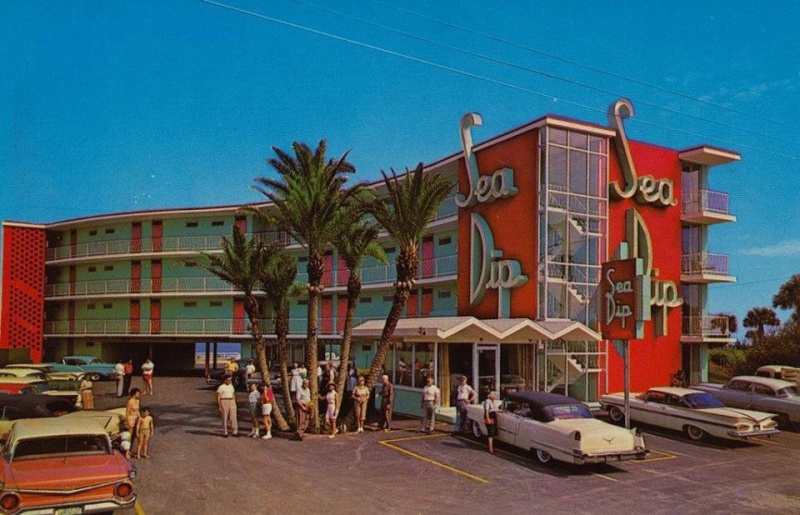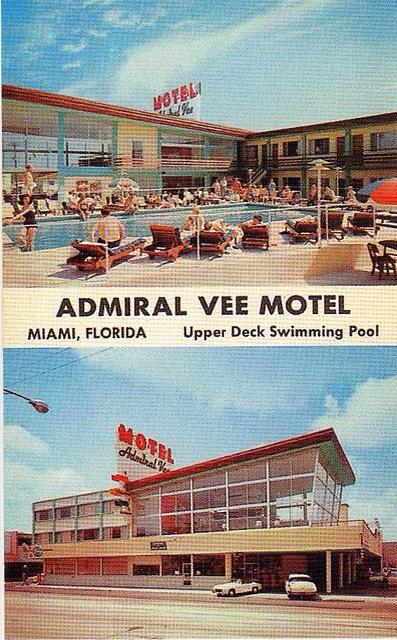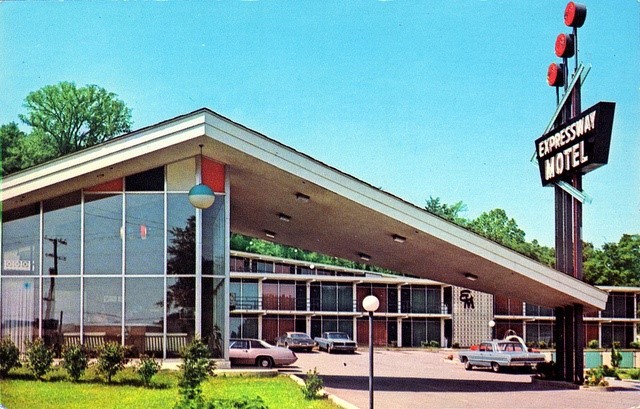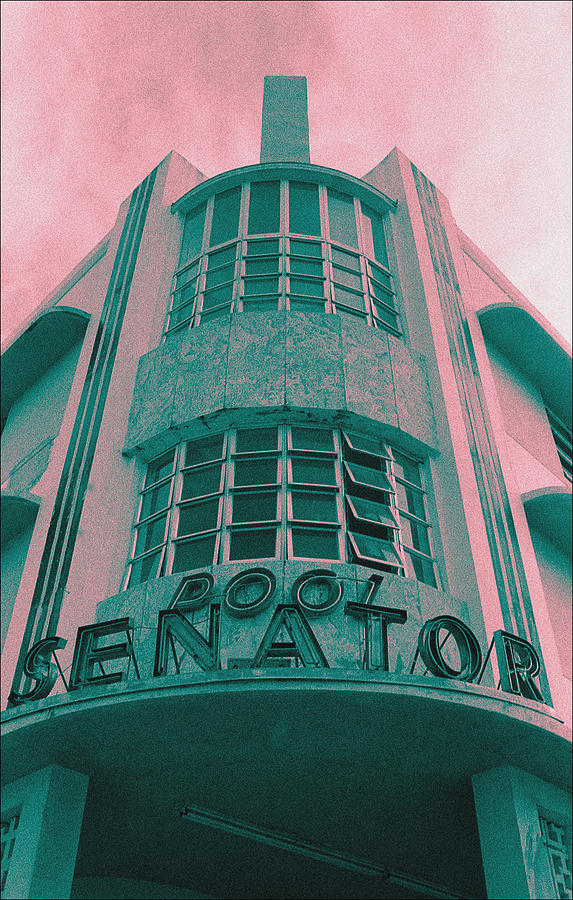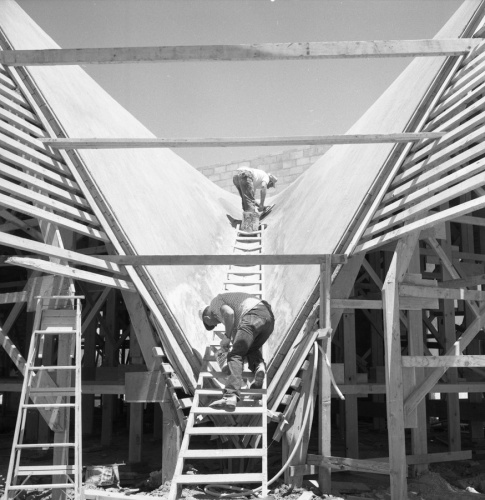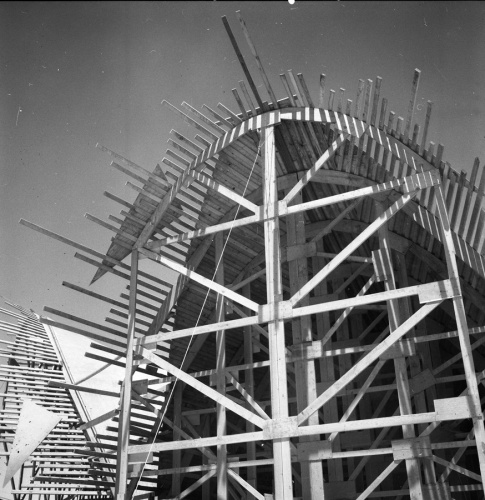Motels - Hôtels 1940's - 1960's
+2
catfishvince
Predicta
6 participants
Traditional Kustom Hot Rod and Vintage Culture and design :: Architecture: mid century modern, Googie, Art deco
Page 1 sur 4
Page 1 sur 4 • 1, 2, 3, 4 
 Re: Motels - Hôtels 1940's - 1960's
Re: Motels - Hôtels 1940's - 1960's
_________________
We don't care the People Says , Rock 'n' roll is here to stay - Danny & the Juniors - 1958
 Re: Motels - Hôtels 1940's - 1960's
Re: Motels - Hôtels 1940's - 1960's
_________________
We don't care the People Says , Rock 'n' roll is here to stay - Danny & the Juniors - 1958
 Re: Motels - Hôtels 1940's - 1960's
Re: Motels - Hôtels 1940's - 1960's
_________________
We don't care the People Says , Rock 'n' roll is here to stay - Danny & the Juniors - 1958
 Re: Motels - Hôtels 1940's - 1960's
Re: Motels - Hôtels 1940's - 1960's
_________________
We don't care the People Says , Rock 'n' roll is here to stay - Danny & the Juniors - 1958
 Re: Motels - Hôtels 1940's - 1960's
Re: Motels - Hôtels 1940's - 1960's
_________________
We don't care the People Says , Rock 'n' roll is here to stay - Danny & the Juniors - 1958
 Re: Motels - Hôtels 1940's - 1960's
Re: Motels - Hôtels 1940's - 1960's
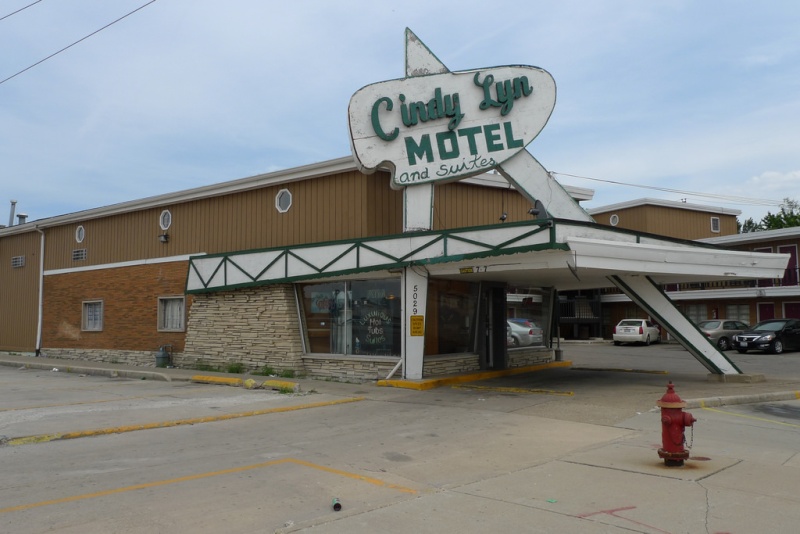
Sur la Route 66 Cindy Lyn Motel
5029 W. Ogden (US 66), Cicero, IL

The Cindy Lyn Motel opened in 1960 with 18 rooms. The Cindy Lyn Motel was built on Historic Route 66 to attract travelers headed into Chicago. We were originally know and marketed as the last motel before the city.The day the Cindy Lyn Motel opened the cost of a room was $6.18 and if a cab dropped off a customer the cab driver would receive a free Cindy Lyn Motel “Zippo” lighter. Since opening day in 1960, the Cindy Lyn Motel has been owned and operated by the same family, we have maintained our personal touch throughout the years.
In the beginning, one person operated the entire property. The same person who checked customers in at the front desk cleaned all 18 rooms. Over the years the staff has grown as well as the motel itself. In the early 1990s 3 hot tub suites were added and because of their success, a third floor was added a few years later which features our Presidential Suite along with another hot tub and 2 other beautiful rooms. In 1999, the east wing was completed which is comprised of 23 rooms plus our first fireplace suite, that offers a gas lit fire next to a Kohler hot tub. Today, we have 65 rooms and a courteous 25 person staff to better serve our guests. We are constantly striving to upgrade our rooms with our guests comfort in mind.
http://cindylynmotel.com/


_________________
We don't care the People Says , Rock 'n' roll is here to stay - Danny & the Juniors - 1958
 Re: Motels - Hôtels 1940's - 1960's
Re: Motels - Hôtels 1940's - 1960's
Wow!!!!
Its really a great collection of old motels and hotels. Its nice to see these beautiful hotels. I have seen Cindy Lyn motel and it was the best experience of my life that I have seen such a great place. I am the big fan of themed hotels and motels like Executive Fantasy Hotels and adult motels.
Its really a great collection of old motels and hotels. Its nice to see these beautiful hotels. I have seen Cindy Lyn motel and it was the best experience of my life that I have seen such a great place. I am the big fan of themed hotels and motels like Executive Fantasy Hotels and adult motels.
ericforster38- Messages : 1
Date d'inscription : 15/07/2014
 Re: Motels - Hôtels 1940's - 1960's
Re: Motels - Hôtels 1940's - 1960's
_________________
We don't care the People Says , Rock 'n' roll is here to stay - Danny & the Juniors - 1958
 Re: Motels - Hôtels 1940's - 1960's
Re: Motels - Hôtels 1940's - 1960's
_________________
We don't care the People Says , Rock 'n' roll is here to stay - Danny & the Juniors - 1958
 Re: Motels - Hôtels 1940's - 1960's
Re: Motels - Hôtels 1940's - 1960's
_________________
We don't care the People Says , Rock 'n' roll is here to stay - Danny & the Juniors - 1958
 Re: Motels - Hôtels 1940's - 1960's
Re: Motels - Hôtels 1940's - 1960's
_________________
We don't care the People Says , Rock 'n' roll is here to stay - Danny & the Juniors - 1958
 Re: Motels - Hôtels 1940's - 1960's
Re: Motels - Hôtels 1940's - 1960's
_________________
We don't care the People Says , Rock 'n' roll is here to stay - Danny & the Juniors - 1958
 Re: Motels - Hôtels 1940's - 1960's
Re: Motels - Hôtels 1940's - 1960's
_________________
We don't care the People Says , Rock 'n' roll is here to stay - Danny & the Juniors - 1958
 Hotel Senator - Miami beach - demolished today
Hotel Senator - Miami beach - demolished today
_________________
We don't care the People Says , Rock 'n' roll is here to stay - Danny & the Juniors - 1958
 Nautilus, A Sixty Hotel, Miami – Florida
Nautilus, A Sixty Hotel, Miami – Florida
SIXTY Hotels announced the latest addition to its collection, the Nautilus South Beach. Slated to open in the fourth quarter of this year, the Nautilus South Beach joins SIXTY Hotel's destinations in New York and Los Angeles, and will be the company's first Miami Beach location.

Originally built as the Nautilus Hotel, the 251-room, oceanfront property is located in the heart of Miami's art deco district at 1825 Collins Avenue. Designed by famed architect Morris Lapidus in the 1950s, the Nautilus South Beach will be renovated with homage to its original spirit and updated with the inclusion of a new restaurant, lobby lounge, extensive events and meeting room space, a pool bar, and a state-of-the-art fitness center. Revealing an extensive evolution of what the property once was and stood for, the Nautilus South Beach will feature a comfortable design that emulates a luxury beach house with public spaces, rooms and suites that will have an international and residential feel.
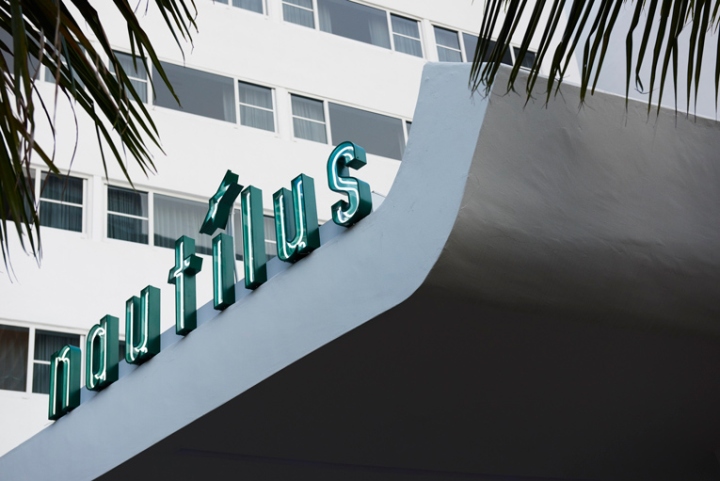
The air of approachable elegance begins in the 251 guest rooms, including 29 premium suites and two stunning signature penthouses—with dazzling ocean views—and a private garden terrace, dining area and kitchen designed to elicit the comfort of one's own beach home, with the added glamour of a modern and sophisticated Miami Beach hotel. A soothing color palette welcomes guests to their boldly modern rooms where comfortable and luxurious design and cutting-edge technology combine to create the perfect stay. All rooms feature custom, 400 thread-count SFERRA linens, gourmet mini bars and amenities by REN.

The hotel's public spaces will embody the same cultivated luxury that guests have grown to expect from a luxury Miami Beach property. The ample lobby in which the reception and concierge desks will be located will be outfitted with plush communal seating areas, providing space for guests and locals to "plug and play". Upon entering, guests will be immediately met with an unpretentious beach vibe with nautical accents and tufted grey linen sofas that and metallic orange leather chairs at the concierge desk brighten the space with eye catching pops of color. Furthering the beach home feel that the property brings as its design inspiration is the use of materials throughout the lobby area such as grey concrete, glove leather, various stones and linen chairs and sofas, reminiscent of those found in global beachfront estates.

In collaboration with Jeffrey Chodorow's China Grill Management and internationally renowned chefs Claude Troisgros and his son Thomas, the hotel will also reintroduce the iconic Blue Door to the Miami dining scene. The Troisgros' will carry on their tradition of melding French technique with Brazilian ingredients. The newly re-imagined restaurant and bar will accommodate 210 seats including an alfresco dining patio that will allow guests to regain what was South Beach's most popular terrace for breakfast, lunch and dinner. The bar area at Blue Door will come alive at night, serving a selection of creative yet sophisticated tropically inspired cocktails. Nautilus South Beach will also feature over 16,500 square-feet of indoor and outdoor event space.

The project is designed by Florida-based designer, Caroline Giraud-Sukornyk of CG Design and architecture is by world renowned Arquitectonica.
- See more at: http://dnahotels.com/blog/post/the-nautilus-miami-beach-to-join-sixty-hotels#sthash.13S2YKWs.dpuf
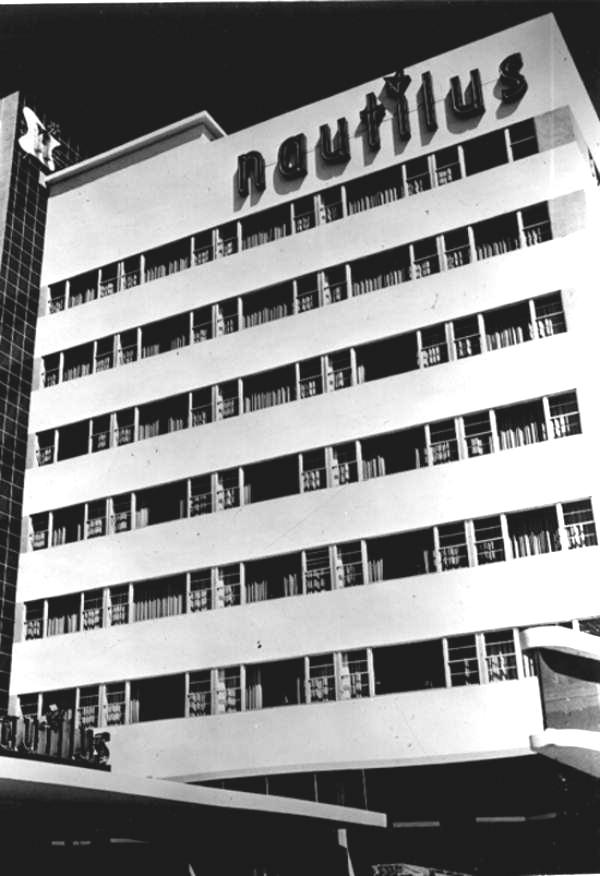

Originally built as the Nautilus Hotel, the 251-room, oceanfront property is located in the heart of Miami's art deco district at 1825 Collins Avenue. Designed by famed architect Morris Lapidus in the 1950s, the Nautilus South Beach will be renovated with homage to its original spirit and updated with the inclusion of a new restaurant, lobby lounge, extensive events and meeting room space, a pool bar, and a state-of-the-art fitness center. Revealing an extensive evolution of what the property once was and stood for, the Nautilus South Beach will feature a comfortable design that emulates a luxury beach house with public spaces, rooms and suites that will have an international and residential feel.

The air of approachable elegance begins in the 251 guest rooms, including 29 premium suites and two stunning signature penthouses—with dazzling ocean views—and a private garden terrace, dining area and kitchen designed to elicit the comfort of one's own beach home, with the added glamour of a modern and sophisticated Miami Beach hotel. A soothing color palette welcomes guests to their boldly modern rooms where comfortable and luxurious design and cutting-edge technology combine to create the perfect stay. All rooms feature custom, 400 thread-count SFERRA linens, gourmet mini bars and amenities by REN.

The hotel's public spaces will embody the same cultivated luxury that guests have grown to expect from a luxury Miami Beach property. The ample lobby in which the reception and concierge desks will be located will be outfitted with plush communal seating areas, providing space for guests and locals to "plug and play". Upon entering, guests will be immediately met with an unpretentious beach vibe with nautical accents and tufted grey linen sofas that and metallic orange leather chairs at the concierge desk brighten the space with eye catching pops of color. Furthering the beach home feel that the property brings as its design inspiration is the use of materials throughout the lobby area such as grey concrete, glove leather, various stones and linen chairs and sofas, reminiscent of those found in global beachfront estates.

In collaboration with Jeffrey Chodorow's China Grill Management and internationally renowned chefs Claude Troisgros and his son Thomas, the hotel will also reintroduce the iconic Blue Door to the Miami dining scene. The Troisgros' will carry on their tradition of melding French technique with Brazilian ingredients. The newly re-imagined restaurant and bar will accommodate 210 seats including an alfresco dining patio that will allow guests to regain what was South Beach's most popular terrace for breakfast, lunch and dinner. The bar area at Blue Door will come alive at night, serving a selection of creative yet sophisticated tropically inspired cocktails. Nautilus South Beach will also feature over 16,500 square-feet of indoor and outdoor event space.

The project is designed by Florida-based designer, Caroline Giraud-Sukornyk of CG Design and architecture is by world renowned Arquitectonica.
- See more at: http://dnahotels.com/blog/post/the-nautilus-miami-beach-to-join-sixty-hotels#sthash.13S2YKWs.dpuf

_________________
We don't care the People Says , Rock 'n' roll is here to stay - Danny & the Juniors - 1958
 The Durham hotel , Durham, North Carolina
The Durham hotel , Durham, North Carolina

Durham finally has a destination-worthy hotel. Tasked with designing the Durham, Los Angeles–based firm Commune drew inspiration from the building’s previous life as the Home Savings Bank, the nearby Black Mountain College in Asheville, and midcentury designers such as Charles Eames, Albert Frey, and Arne Jacobsen. Inside, boldly colored rooms and suites are furnished with custom-designed furniture and blankets by Raleigh Denim, while the restaurant, led by award-winning chef Andrea Reusing, features soaring ceilings and hanging lights designed as a nod to Yoshiro Taniguchi’s chandeliers in Tokyo’s Hotel Okura.

When it comes to the overall design, the hotel is keeping its plans closely guarded. The building itself is known as the Home Savings Bank building, a mid-century modern classic built in the late 1960s. A major feature of the building is the view from its roof, which Reusing explains is unique in the city for its height and placement. "It's really magnificent," she says. With the construction coming together, Reusing shares more details about the 100-seat roof concept, which will feature a mix of indoor and outdoor space. "Part of it will be [year-round]," she explains. "There's all aspects of what you think of as 'rooftop.' There's indoor, then there's outdoor, covered, heated, and then there's [a] totally open-to-nature outdoor balcony around the edge. It's all phases of rooftop.
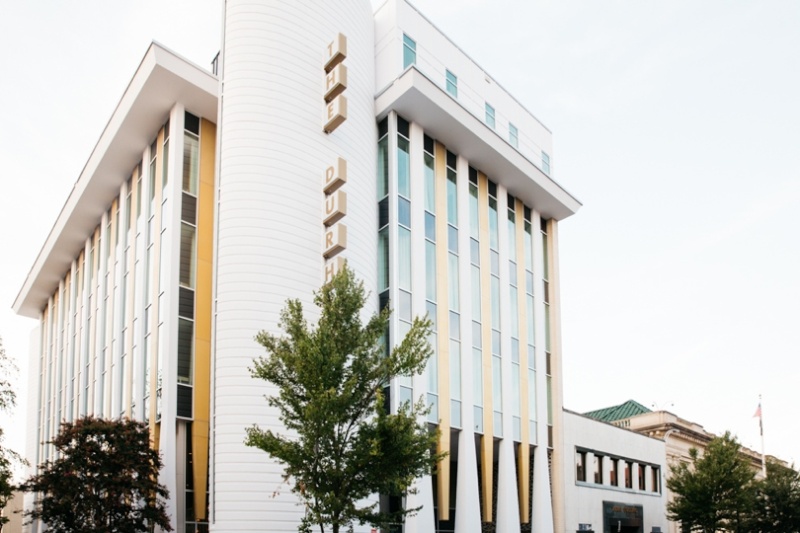
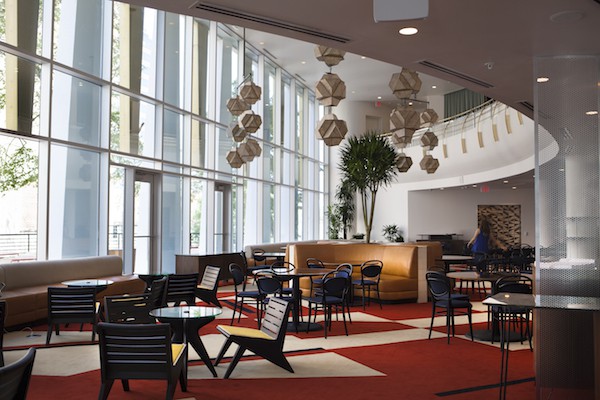
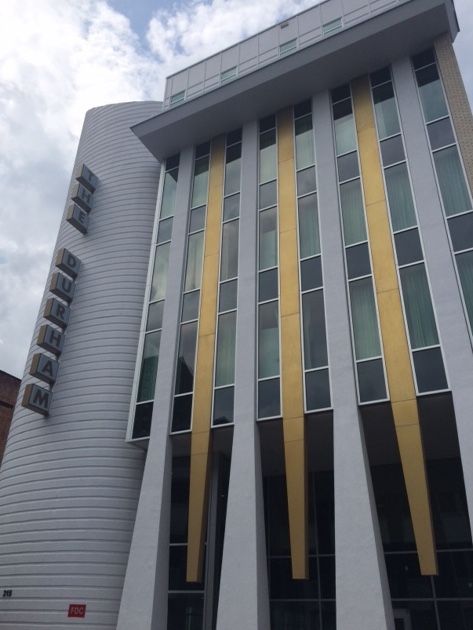
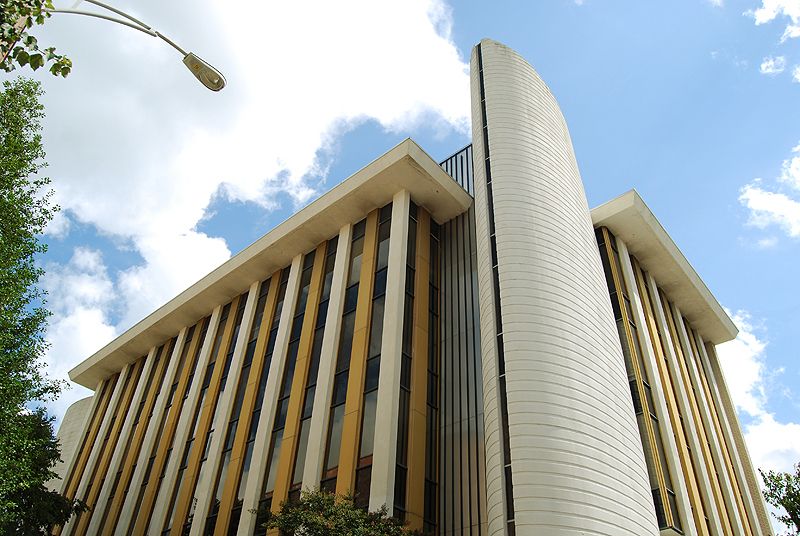
Dernière édition par Predicta le Jeu 3 Mar - 8:20, édité 2 fois
_________________
We don't care the People Says , Rock 'n' roll is here to stay - Danny & the Juniors - 1958
 The Watergate Hotel, Washington, D.C.
The Watergate Hotel, Washington, D.C.

Rather than try to hide its scandalous past, D.C.’s famed Watergate Hotel is embracing its history with a $125 million redesign that harks back to its midcentury roots. Originally designed in 1961 by Italian architect Luigi Moretti, the building features sweeping curves and dramatic lighting meant to create intrigue. Situated in Foggy Bottom, the Watergate is set to reopen in April with 336 rooms and suites (many of which will have a balcony overlooking the Potomac River), a whiskey bar, several restaurants, and a rooftop terrace. The hotel’s staff will wear uniforms by Janie Bryant, costume designer for Mad Men





_________________
We don't care the People Says , Rock 'n' roll is here to stay - Danny & the Juniors - 1958
 L’Horizon Hotel, Palm Springs, California
L’Horizon Hotel, Palm Springs, California
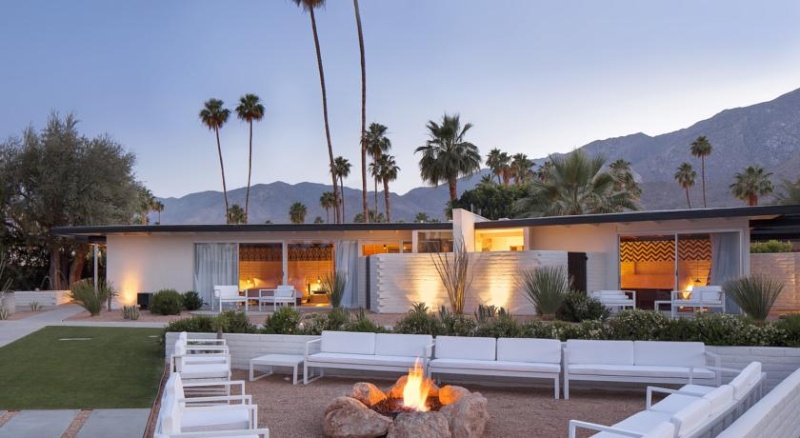
Originally designed in 1952 by midcentury modernist architect William F. Cody, the revamped hotel, awash in soothing whites, gave us some serious inspiration for our backyard makeover, as it perfectly mixes the Palm Springs glamour that I love with the clean lines that Fred Baby craves. Now if only we could get Steve Hermann, the interior designer who gave The Horizon its multimillion dollar facelift, to come inject a little botox into our backyard, we’d be all set.
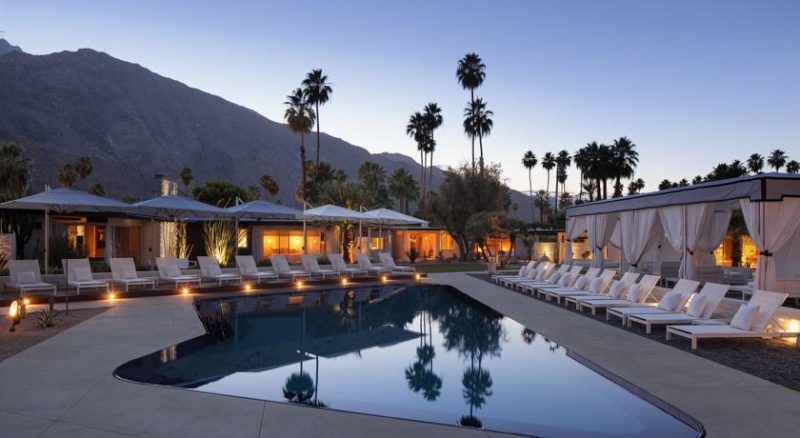
L’Horizon has been garnering lots of buzz, with a feature on Architectural Digest and one coming soon from my friends at Palm Springs Style. Officially opening on July 1st and featuring 25 bungalows on three acres, L’Horizon is slated to be the chicest new hotel in Palm Springs.
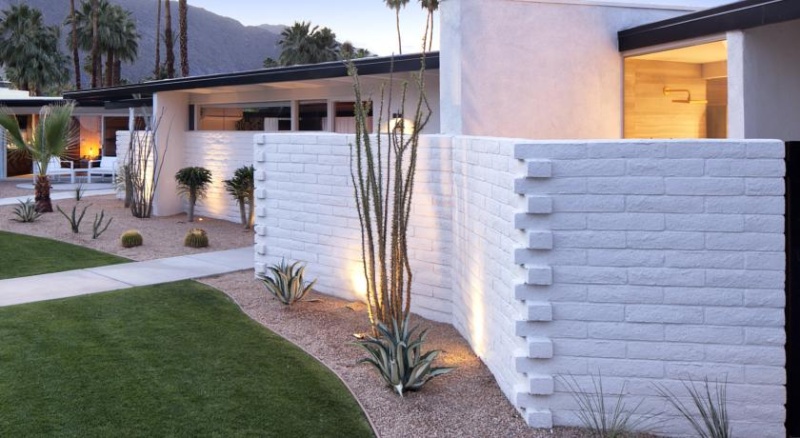
If there’s a mecca for midcentury-modern design, Palm Springs is it. There’s certainly no shortage of hotels, but L’Horizon is the most jaw-dropping of the pack. In Hollywood’s heyday, stars like Marilyn Monroe and Betty Grable flocked to the property, designed in 1952 by famed Desert Modern architect William F. Cody. Now the iconic hotel has been reborn, with 25 private bungalows outfitted in bespoke and vintage furnishings, Frette linens, marble baths, and Le Labo bath products. As if that weren’t enough, Giacomo Pettinari, who cut his teeth at El Bulli, helms the stylish alfresco restaurant.

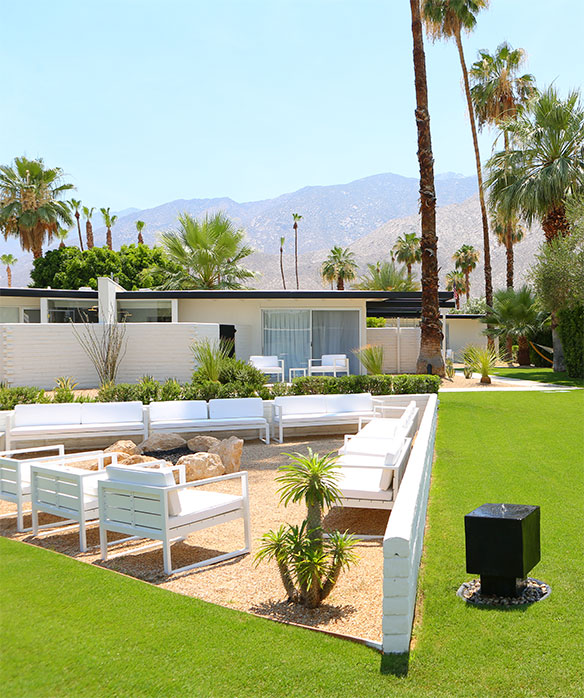

_________________
We don't care the People Says , Rock 'n' roll is here to stay - Danny & the Juniors - 1958
 The Manhattan Hotel at Times Square Hotel
The Manhattan Hotel at Times Square Hotel
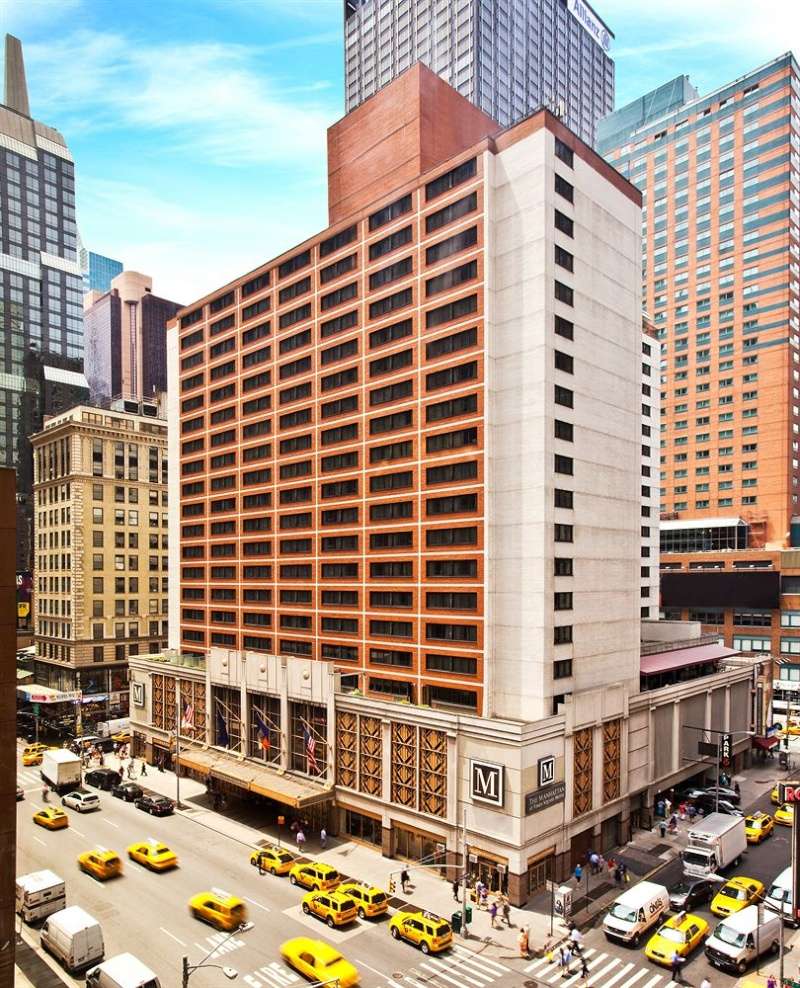
Located in the heart of the world’s most exhilarating city, The Manhattan at Times Square Hotel effortlessly merges the 24/7 excitement of Times Square with the age-old glamour of New York. Delighting guests with its prime location and classic Art Deco detailing, this landmark hotel was built in 1962 during New York City’s heady Mad Men-era. Its commanding Seventh Avenue location a testament to both longevity and lavish attention to detail.
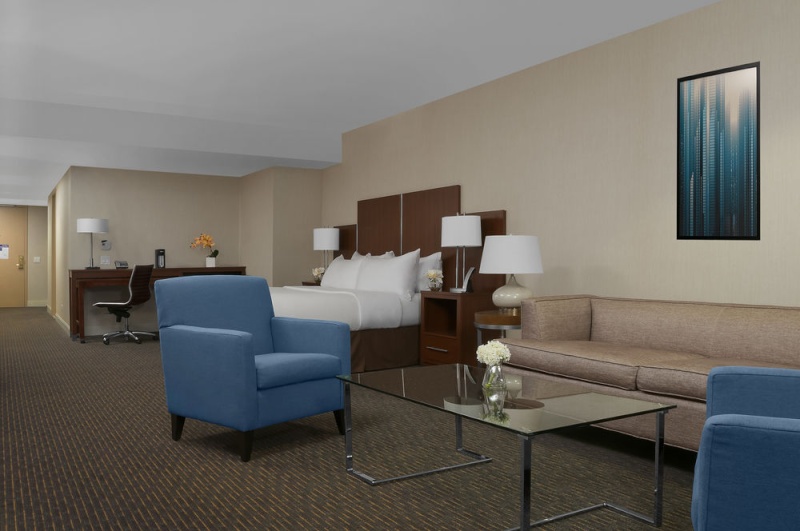

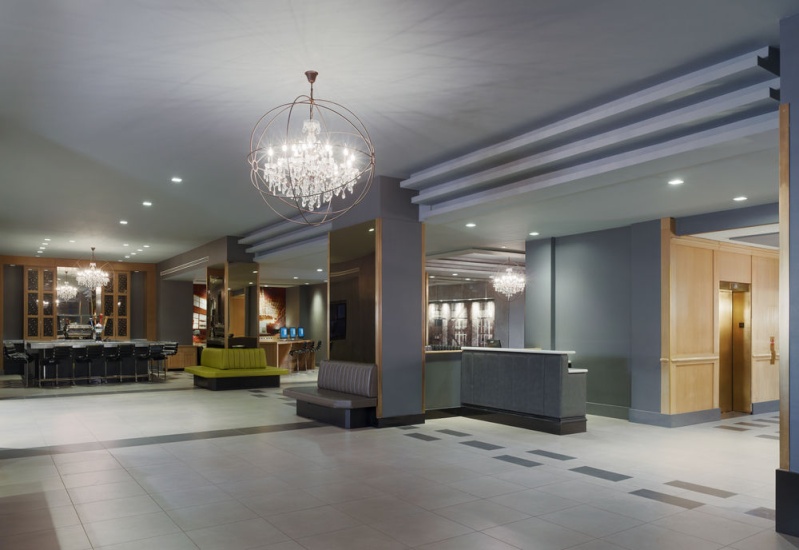
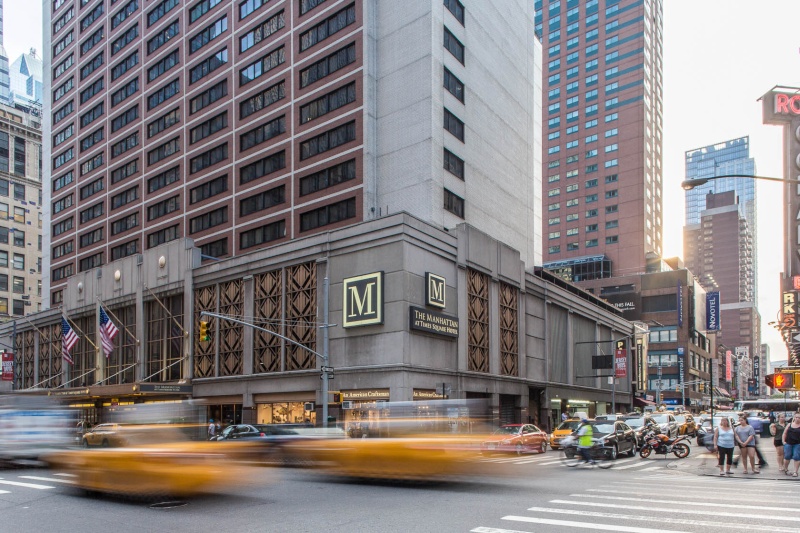
_________________
We don't care the People Says , Rock 'n' roll is here to stay - Danny & the Juniors - 1958
 Uptown Motel - Richard Crowther - 1958
Uptown Motel - Richard Crowther - 1958
_________________
We don't care the People Says , Rock 'n' roll is here to stay - Danny & the Juniors - 1958
 Re: Motels - Hôtels 1940's - 1960's
Re: Motels - Hôtels 1940's - 1960's
Vraiment sublime celui la!



gotthenoise- Messages : 491
Date d'inscription : 04/03/2013
Age : 33
Localisation : Montmorillon
 La Concha Motel - Paul R. Williams - 1961
La Concha Motel - Paul R. Williams - 1961
Hats off to the folks at the Las Vegas Neon Museum for preserving the La Concha Motel lobby. The La Concha Motel was designed by Los Angeles-based architect Paul R. Williams. It was located on the Las Vegas Strip, near the Riviera (which is now closed - wah!) and was open from 1961 to 2003. Last week, I visited Las Vegas for the first time in many years. It was my first time seeing the La Concha intact. My last time at the museum, the building was in pieces. BRAVO
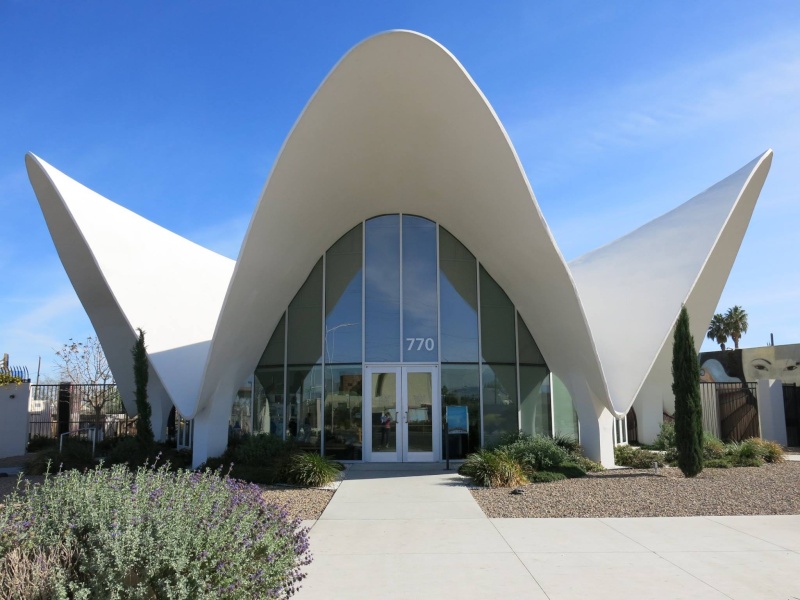
In Las Vegas, there is a neon graveyard located on three acres off North Las Vegas Boulevard. This outdoor lot is called the Boneyard, perhaps in reference to the legendary elephant graveyards of Africa. The lights may have dimmed on over 200 vintage neon signs, but they are not dead, only rescued and preserved by The Neon Museum. While French chemist Georges Claude invented the neon lamp, it was the competing hotels and restaurants of mid-century Vegas that turned them into art. Walking around The Neon Museum, the visitor sees the remains of Las Vegas kitsch—a 10-foot-tall martini glass complete with a lighted cherry, the giant glowing lamp from the Aladdin Hotel, thousands of incandescent bulbs, glittery signs and lots of neon glory (image 23). The Boneyard is also the home for one of Paul R. Williams’ most unusual buildings, the iconic 1,100-square-foot La Concha Motel lobby, his salute to Southern California Googie architecture.
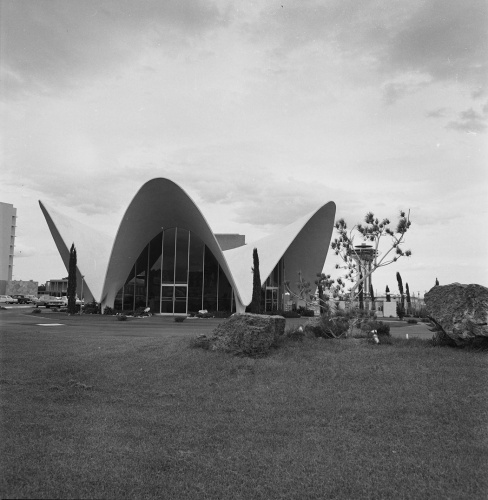
The genealogy for the architecture of La Concha Motel is traceable to a Southern California restaurant designed by John Lautner, Googies, whose mascot was a cartoon waitress with fried egg eyes. Cheap, modern, flashy, where form does not follow function, Googie-inspired buildings were aesthetically unrestrained. Architectural historian Alan Hess described them as “cartoons in steel and glass, designed to catch the attention at highway speeds.” While the style was dismissed by intellectuals of the 1950s and 1960s as “a little too western, and a little too American for serious consideration,” it was immensely popular with the rest of the country.
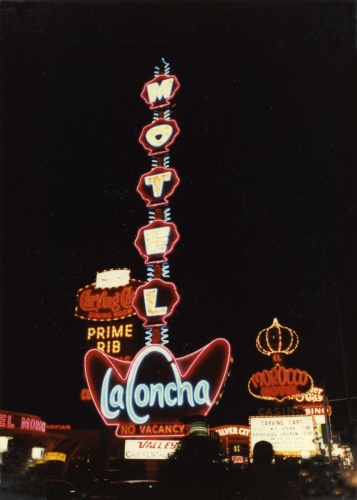
When M. K. Doumani commissioned Williams in 1961 to design his 100-room motel, he envisioned something unique among the huge hotel-casinos such as Desert Inn, Dunes or Tropicana. (aerial image 3) He wanted his motel to be a memorable architectural sign, as memorable as the neon signage on The Las Vegas Strip. He wanted an architectural application that would set his hostelry apart and attract guests. (Paul Richard. Today's Family Digest. Nov. 1969) While La Concha did not have the amenities of the larger hotels, the drive-up motel Williams created was stylish, intimate and memorable.
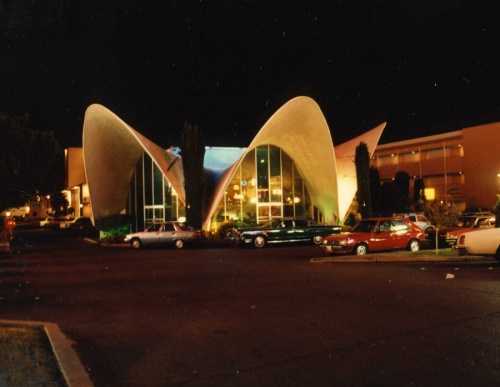
According to local historian Dorothy Wright, La Concha could only have been created for Las Vegas. Blending "high design and hands-on construction" the motel was built on a shoe string budget with different Doumani family members pitching in. Two sons worked on the actual construction and various members of the family shopped at local hardware stores for off-the-shelf fixtures. The money saved was used to build "a huge, towering sign whose base was the distinctive stylized La Concha logo." (Desert Companion. December 2012)
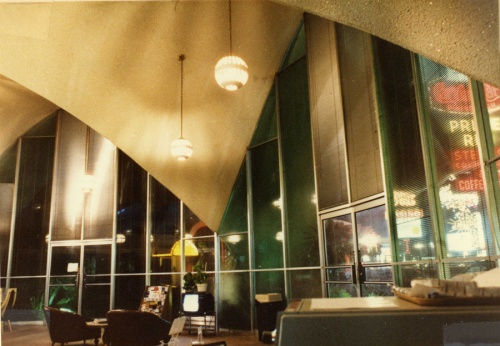
But what about that “intersecting hyperbolic paraboloid” lobby of glass and thin-shell concrete? Was it a stylized conch shell, a butterfly or Williams’ playful take on America’s fascination with cars and science fiction? Whatever his intent, the building’s aesthetics were not out of character with elements in his previous work. Williams’ buildings were often filled with curves and circular details in the ceilings, building overhangs, arched entries, pool or lunch counter.
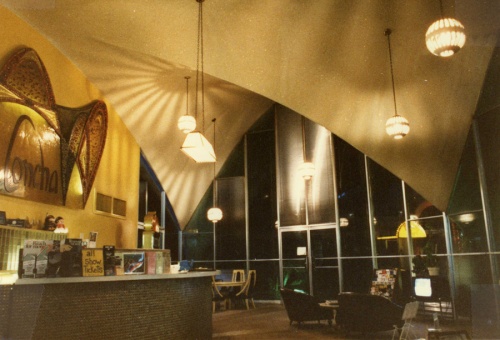
While Googie-style architecture has often been criticized as the crass work of anonymous draftsmen, the La Concha Motel is an example of the style as designed by a serious and respected American architect. Few examples of this populist style survive, but Williams’ La Concha Motel lobby has been saved through the hard work of Nevada preservationists and architectural historians. The Neon Museum hopes to convert the La Concha Motel lobby into their visitor center in 2011.
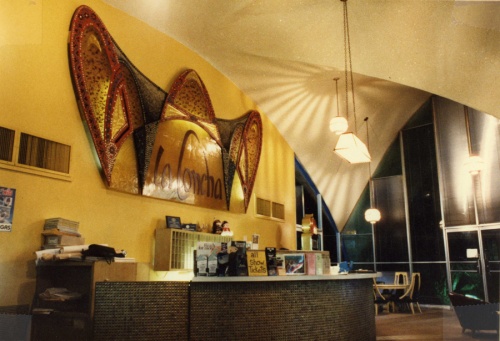

In Las Vegas, there is a neon graveyard located on three acres off North Las Vegas Boulevard. This outdoor lot is called the Boneyard, perhaps in reference to the legendary elephant graveyards of Africa. The lights may have dimmed on over 200 vintage neon signs, but they are not dead, only rescued and preserved by The Neon Museum. While French chemist Georges Claude invented the neon lamp, it was the competing hotels and restaurants of mid-century Vegas that turned them into art. Walking around The Neon Museum, the visitor sees the remains of Las Vegas kitsch—a 10-foot-tall martini glass complete with a lighted cherry, the giant glowing lamp from the Aladdin Hotel, thousands of incandescent bulbs, glittery signs and lots of neon glory (image 23). The Boneyard is also the home for one of Paul R. Williams’ most unusual buildings, the iconic 1,100-square-foot La Concha Motel lobby, his salute to Southern California Googie architecture.

The genealogy for the architecture of La Concha Motel is traceable to a Southern California restaurant designed by John Lautner, Googies, whose mascot was a cartoon waitress with fried egg eyes. Cheap, modern, flashy, where form does not follow function, Googie-inspired buildings were aesthetically unrestrained. Architectural historian Alan Hess described them as “cartoons in steel and glass, designed to catch the attention at highway speeds.” While the style was dismissed by intellectuals of the 1950s and 1960s as “a little too western, and a little too American for serious consideration,” it was immensely popular with the rest of the country.

When M. K. Doumani commissioned Williams in 1961 to design his 100-room motel, he envisioned something unique among the huge hotel-casinos such as Desert Inn, Dunes or Tropicana. (aerial image 3) He wanted his motel to be a memorable architectural sign, as memorable as the neon signage on The Las Vegas Strip. He wanted an architectural application that would set his hostelry apart and attract guests. (Paul Richard. Today's Family Digest. Nov. 1969) While La Concha did not have the amenities of the larger hotels, the drive-up motel Williams created was stylish, intimate and memorable.

According to local historian Dorothy Wright, La Concha could only have been created for Las Vegas. Blending "high design and hands-on construction" the motel was built on a shoe string budget with different Doumani family members pitching in. Two sons worked on the actual construction and various members of the family shopped at local hardware stores for off-the-shelf fixtures. The money saved was used to build "a huge, towering sign whose base was the distinctive stylized La Concha logo." (Desert Companion. December 2012)

But what about that “intersecting hyperbolic paraboloid” lobby of glass and thin-shell concrete? Was it a stylized conch shell, a butterfly or Williams’ playful take on America’s fascination with cars and science fiction? Whatever his intent, the building’s aesthetics were not out of character with elements in his previous work. Williams’ buildings were often filled with curves and circular details in the ceilings, building overhangs, arched entries, pool or lunch counter.

While Googie-style architecture has often been criticized as the crass work of anonymous draftsmen, the La Concha Motel is an example of the style as designed by a serious and respected American architect. Few examples of this populist style survive, but Williams’ La Concha Motel lobby has been saved through the hard work of Nevada preservationists and architectural historians. The Neon Museum hopes to convert the La Concha Motel lobby into their visitor center in 2011.

_________________
We don't care the People Says , Rock 'n' roll is here to stay - Danny & the Juniors - 1958
 Re: Motels - Hôtels 1940's - 1960's
Re: Motels - Hôtels 1940's - 1960's
_________________
We don't care the People Says , Rock 'n' roll is here to stay - Danny & the Juniors - 1958
 Re: Motels - Hôtels 1940's - 1960's
Re: Motels - Hôtels 1940's - 1960's
_________________
We don't care the People Says , Rock 'n' roll is here to stay - Danny & the Juniors - 1958
 Re: Motels - Hôtels 1940's - 1960's
Re: Motels - Hôtels 1940's - 1960's
Fresh off the evening plane, and my friend drives us directly to the heart of Las Vegas Boulevard – The Strip. From the passenger seat, I soak in the throbbing lights, pirate boats, fountain shows and drunken revelers. But amidst the flash, what truly catches my eye is a tiny dark patch. Alone and deserted in the shadows is a round series of white clamshells, the strangest and most beautiful thing I’ve yet seen on The Strip. I ask my friend to please bring me back here in the daylight so I can get a better look at the building in the center of the Black Hole on The Strip.

Come to find out that within my first 5 minutes in Las Vegas, I fell in love with a building that’s scheduled to be demolished. But of course! As in St. Louis so it remains in Vegas: If I love it, it shall come down. For a person leaving St. Louis in disgust over how it wastes its evolving architectural heritage, Vegas was either the best or worst place to go, depending on what lessons I needed/wanted to learn.
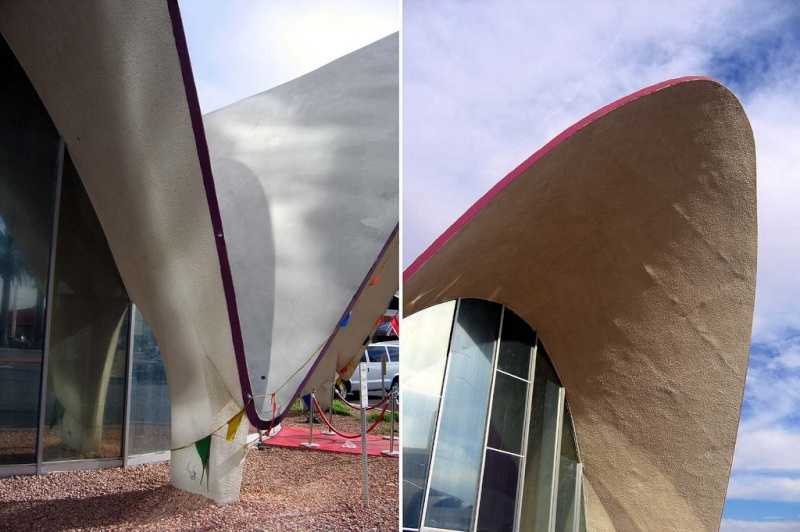
The building is the lobby of what was the La Concha Motel. The motel portion was demolished in December 2003 but the famous lobby remains behind as the sales office of the company schilling space in the skyscraper condo slated to rise in its place. Considering that downtown Las Vegas regenerates itself about every 15 years, the La Concha – and it’s next door neighbor, the former El Morocco Motel – has been a tenacious little trooper. But times up, ta ta.
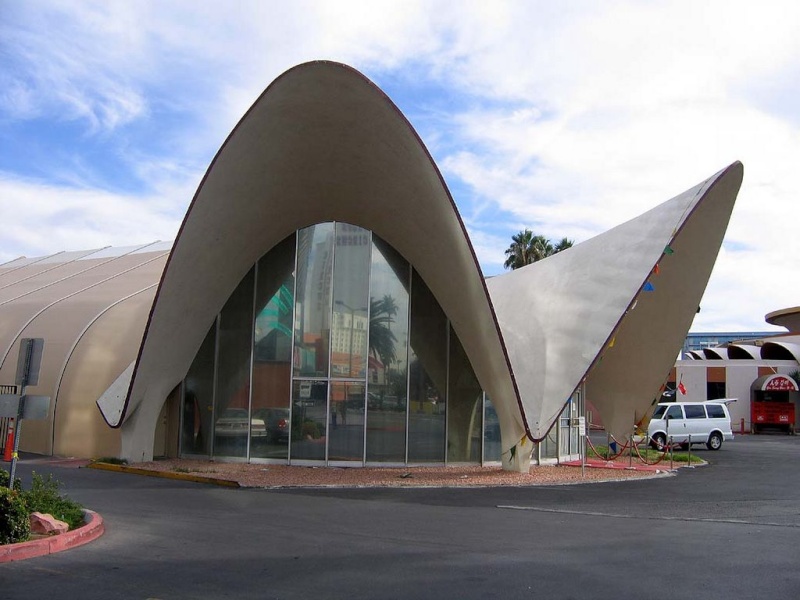
But wait up! Turns out there is a Nevada Preservation Society! Concerning Las Vegas, would this define the phrase “exercise in futility?” But their first successful “save” is the La Concha lobby, which will be cut into 7 pieces and moved a couple of miles away to serve as part of the anticipated neon sign museum. Yes, there are small pockets of people trying their best to preserve Las Vegas history, and you’d think in a town with such deep pockets it would be easy, but no.

Las Vegas owes its life to the building of the Hoover Dam, which was a WPA project in the 1930s, so “history” is a vague concept for this town. When locals say a building is old, they mean it might be 30 years old. When any city on the globe can be recreated with the proper props and financial backing, who cares about the physicality of a history that reaches back maybe 70-odd years?
Look to the mountains that 360-circle Vegas and you can feel the land’s history. It’s all insanely gorgeous, very Butch Cassidy & the Sundance Kid. Step onto the foot of a mountain, stare up into the abyss and know that not even Steve Wynn can recreate something this awesome (sure he created a forest, but it has that 15-year shelf life). But because of that mountain ring, there is finite space to build, and since Vegas exists solely for gambling, the most important buildings accommodate that activity.
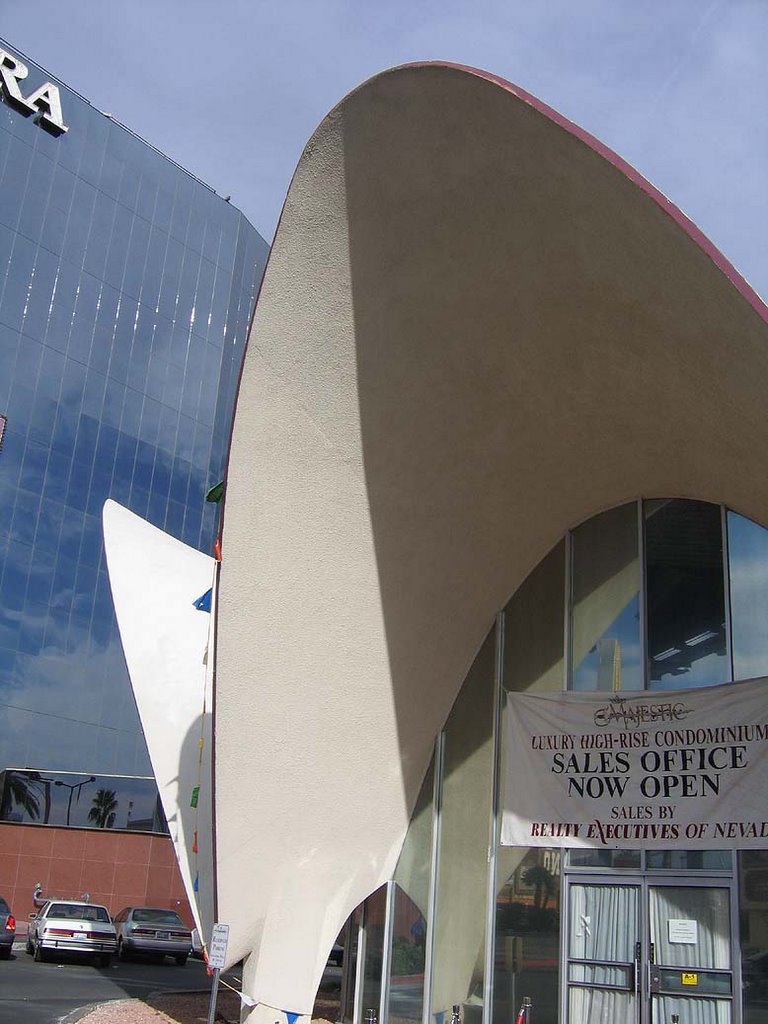
Gambling only requires a place for someone to sit down and bet. It truly doesn’t matter what the place looks like; money leaves you just the same at the Bellagio as it does at the slot machines in the gas station bathroom. With gambling, it’s not the container but the content, and if a particular building stops pulling in gamblers, then the building has to go. It’s that simple, and in a city where everything is a façade, I adore that rare form of honesty. Which makes the saving of the La Concha lobby all the more remarkably bizarre.
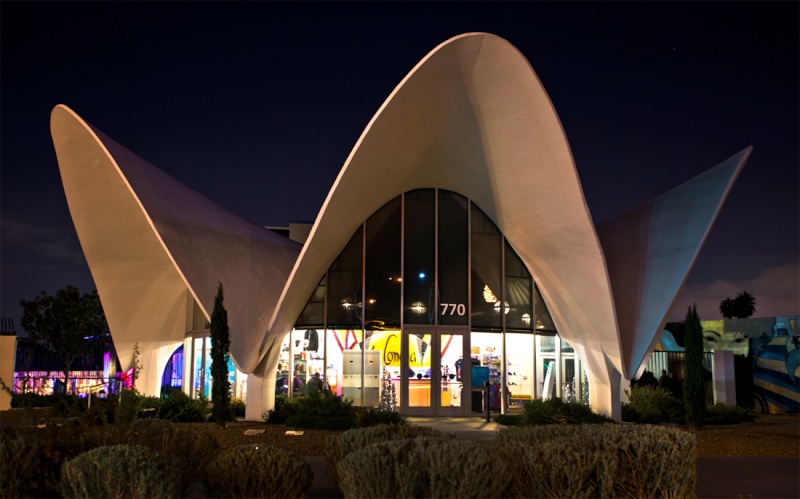
http://www.beltstl.com/2005/11/la-concha-motel-las-vegas/

Come to find out that within my first 5 minutes in Las Vegas, I fell in love with a building that’s scheduled to be demolished. But of course! As in St. Louis so it remains in Vegas: If I love it, it shall come down. For a person leaving St. Louis in disgust over how it wastes its evolving architectural heritage, Vegas was either the best or worst place to go, depending on what lessons I needed/wanted to learn.

The building is the lobby of what was the La Concha Motel. The motel portion was demolished in December 2003 but the famous lobby remains behind as the sales office of the company schilling space in the skyscraper condo slated to rise in its place. Considering that downtown Las Vegas regenerates itself about every 15 years, the La Concha – and it’s next door neighbor, the former El Morocco Motel – has been a tenacious little trooper. But times up, ta ta.

But wait up! Turns out there is a Nevada Preservation Society! Concerning Las Vegas, would this define the phrase “exercise in futility?” But their first successful “save” is the La Concha lobby, which will be cut into 7 pieces and moved a couple of miles away to serve as part of the anticipated neon sign museum. Yes, there are small pockets of people trying their best to preserve Las Vegas history, and you’d think in a town with such deep pockets it would be easy, but no.

Las Vegas owes its life to the building of the Hoover Dam, which was a WPA project in the 1930s, so “history” is a vague concept for this town. When locals say a building is old, they mean it might be 30 years old. When any city on the globe can be recreated with the proper props and financial backing, who cares about the physicality of a history that reaches back maybe 70-odd years?
Look to the mountains that 360-circle Vegas and you can feel the land’s history. It’s all insanely gorgeous, very Butch Cassidy & the Sundance Kid. Step onto the foot of a mountain, stare up into the abyss and know that not even Steve Wynn can recreate something this awesome (sure he created a forest, but it has that 15-year shelf life). But because of that mountain ring, there is finite space to build, and since Vegas exists solely for gambling, the most important buildings accommodate that activity.

Gambling only requires a place for someone to sit down and bet. It truly doesn’t matter what the place looks like; money leaves you just the same at the Bellagio as it does at the slot machines in the gas station bathroom. With gambling, it’s not the container but the content, and if a particular building stops pulling in gamblers, then the building has to go. It’s that simple, and in a city where everything is a façade, I adore that rare form of honesty. Which makes the saving of the La Concha lobby all the more remarkably bizarre.

http://www.beltstl.com/2005/11/la-concha-motel-las-vegas/
_________________
We don't care the People Says , Rock 'n' roll is here to stay - Danny & the Juniors - 1958
Page 1 sur 4 • 1, 2, 3, 4 
 Sujets similaires
Sujets similaires» vintage 1940s, 1950s and 1960s sculpture
» Téloches.... Vintage televisions - 1940s 1950s and 1960s tv
» Coiffures 1940s
» Vintage radios
» Chaises design - Modernist & Googie Chairs - fauteuils vintages
» Téloches.... Vintage televisions - 1940s 1950s and 1960s tv
» Coiffures 1940s
» Vintage radios
» Chaises design - Modernist & Googie Chairs - fauteuils vintages
Traditional Kustom Hot Rod and Vintage Culture and design :: Architecture: mid century modern, Googie, Art deco
Page 1 sur 4
Permission de ce forum:
Vous ne pouvez pas répondre aux sujets dans ce forum
 Connexion
Connexion

